
The Reconstruction era was a period in United States history following the American Civil War, dominated by the legal, social, and political challenges of abolishing slavery and reintegrating the former Confederate States of America into the United States. During this period, three amendments were added to the United States Constitution to grant equal civil rights to the newly freed slaves. With this they used poll taxes, literacy tests and intimidation to control people of color.
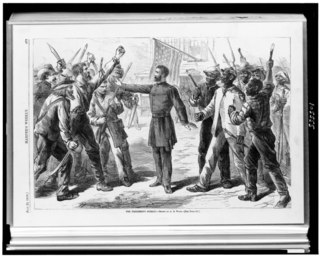
The Bureau of Refugees, Freedmen, and Abandoned Lands, usually referred to as simply the Freedmen's Bureau, was a U.S. government agency of early post American Civil War Reconstruction, assisting freedmen in the South. It was established on March 3, 1865, and operated briefly as a federal agency after the War, from 1865 to 1872, to direct "provisions, clothing, and fuel...for the immediate and temporary shelter and supply of destitute and suffering refugees and freedmen and their wives and children".
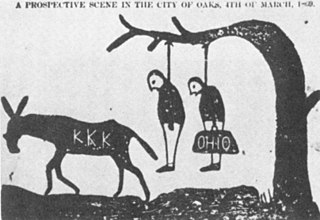
In United States history, the pejorative scalawag referred to white Southerners who supported Reconstruction policies and efforts after the conclusion of the American Civil War.
The Freedmen's Aid Society was founded in 1859 during the American Civil War by the American Missionary Association (AMA), a group supported chiefly by the Congregational, Presbyterian and Methodist churches in the North. It organized a supply of teachers from the North and provided housing for them, to set up and teach in schools in the South for freedmen and their children. The AMA founded a total of more than 500 schools and colleges for freedmen in the South after the war, so that freedmen could be educated as teachers, nurses and other professionals.
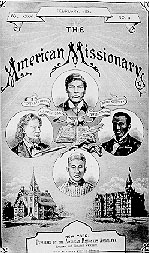
The American Missionary Association (AMA) was a Protestant-based abolitionist group founded on September 3, 1846 in Albany, New York. The main purpose of the organization was abolition of slavery, education of African Americans, promotion of racial equality, and spreading Christian values. Its members and leaders were of both races; The Association was chiefly sponsored by the Congregationalist churches in New England. The main goals were to abolish slavery, provide education to African Americans, and promote racial equality for free Blacks. The AMA played a significant role in several key historical events and movements, including the Civil War, Reconstruction, and the Civil Rights Movement.
Walter Lynwood Fleming (1874–1932) was an American historian of the South and Reconstruction. He was a leader of the Dunning School of scholars in the early 20th century, who addressed Reconstruction era history using historiographical technique. He was a professor at Vanderbilt University from 1917 through his career, also serving as Dean of the School of Arts and Sciences, and Director of the Graduate School. A prolific writer, he published ten books and 166 articles and reviews. The son of a plantation owner who had slaves, Fleming was sympathetic to White supremacist arguments and Democratic Party positions of his era while critical of Republicans and Reconstruction.
At the end of the American Civil War, the devastation and disruption in the state of Georgia were dramatic. Wartime damage, the inability to maintain a labor force without slavery, and miserable weather had a disastrous effect on agricultural production. The state's chief cash crop, cotton, fell from a high of more than 700,000 bales in 1860 to less than 50,000 in 1865, while harvests of corn and wheat were also meager. The state government subsidized construction of numerous new railroad lines. White farmers turned to cotton as a cash crop, often using commercial fertilizers to make up for the poor soils they owned. The coastal rice plantations never recovered from the war.

This is a selected bibliography of the main scholarly books and articles of Reconstruction, the period after the American Civil War, 1863–1877.

Francis Lewis Cardozo was an American clergyman, politician, and educator. When elected in South Carolina as Secretary of State in 1868, he was the first African American to hold a statewide office in the United States.
The civil rights movement (1865–1896) aimed to eliminate racial discrimination against African Americans, improve their educational and employment opportunities, and establish their electoral power, just after the abolition of slavery in the United States. The period from 1865 to 1895 saw a tremendous change in the fortunes of the Black community following the elimination of slavery in the South.

George Thompson Ruby was an African-American Republican politician in Reconstruction-era Texas. Born in New York to African-American businessman Reuben Ruby and Rachel Humphey and raised in Portland, Maine, he worked in Boston and Haiti before starting teaching in New Orleans before the end of the American Civil War.
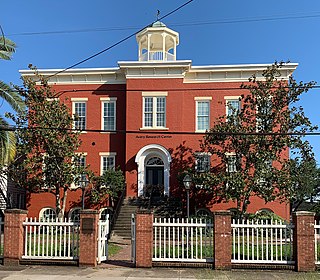
The Avery Research Center for African American History and Culture is a division of the College of Charleston library system. The center is located on the site of the former Avery Normal Institute in the Harleston village district at 125 Bull Street in Charleston, South Carolina. This historic secondary school trained Black students for professional careers and leadership roles, and served as a hub for Charleston’s African-American community from 1865 to 1954.
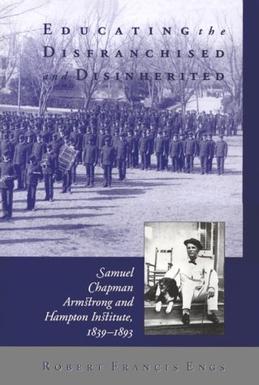
Educating the Disfranchised and Disinherited is a 1999 biography of American General Samuel Chapman Armstrong and his associated normal school for freedmen, Hampton Institute, written by Robert Francis Engs and published by the University of Tennessee Press. The first full biography of its kind, the book portrays Armstrong as a complex politician and administrator in the postbellum period who balanced the needs of opposed parties surrounding the Virginia school: its African American students, Southern white neighbors, and Northern philanthropist funders. Previous works presented Armstrong in a polarized fashion, as either a savior or handicap for freedmen. The book emphasizes Armstrong's upbringing as a missionary in Hawaii in the development of his educational philosophy.

Joseph Winthrop Holley was a 19th-century American educator and author. He is best known as the founder of Albany State University, which he founded in 1903 as the Albany Bible and Manual Training Institute. He served as the school's president from its inception until his retirement in 1943.
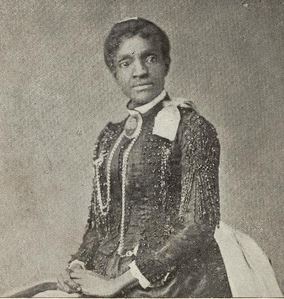
Nellie A. Ramsey Leslie was notable as a teacher, musician and composer, working in Louisiana and Mississippi, and then in Indian Territory and Corpus Christi, Texas, where she founded a musical conservatory for girls. Born into slavery in Virginia, after emancipation she gained schooling in Ohio and moved to Louisiana to teach for the Freedmen's Bureau. She attended the Normal School of Straight University and gained further training as a teacher. Teaching in Louisiana, Mississippi, Indian Territory, and Texas, Leslie educated freedmen and their children.
Sara Griffith Stanley Woodward was an African American abolitionist, missionary teacher, and published author. Sara, sometimes listed as "Sarah", came from a biracial family, of which both black and white sides owned slaves. Despite this fact, she spent most of her working life promoting freedom and civil rights for African Americans. Her family's affluence enabled her to obtain a diploma in "Ladies Courses" from Oberlin College, the first college in the United States to admit African Americans beginning in 1835. She wrote and published several abolitionist works in journal magazines, but her most famous writing was an address on behalf of the Delaware Ladies' Antislavery Society given at the State Convention of Colored Men during the 1856 election year. After the American Civil War, she spent several years working as a teacher for the American Missionary Association, working in the North and in the South educating African American children.

African Americans have played an essential role in the history of Arkansas, but their role has often been marginalized as they confronted a society and polity controlled by white supremacists. During the slavery era to 1865, they were considered property and were subjected to the harsh conditions of forced labor. After the Civil War and the passage of the 13th, 14th, and 15th Reconstuction Amendments to the U.S. Constitution, African Americans gained their freedom and the right to vote. However, the rise of Jim Crow laws in the 1890s and early 1900s led to a period of segregation and discrimination that lasted into the 1960s. Most were farmers, working their own property or poor sharecroppers on white-owned land, or very poor day laborers. By World War I, there was steady emigration from farms to nearby cities such as Little Rock and Memphis, as well as to St. Louis and Chicago.
History of education in the Southern United States covers the institutions, ideas and leaders of schools and education in the Southern states from colonial times to about the year 2000. It covers all the states and the main gender, racial and ethnic groups.
The History of African-American education deals with the public and private schools at all levels used by African Americans in the United States and for the related policies and debates. Black schools, also referred to as "Negro schools" and "colored schools", were racially segregated schools in the United States that originated in the Reconstruction era after the American Civil War. They were created in Southern states under biracial Republican governments as free public schools for the formerly enslaved. All their students were blacks. After 1877, conservative whites took control across the South. They continued the black schools, but at a much lower funding rate than white schools.
Samuel Stanford Ashley was an American Christian minister and educator who served as the North Carolina Superintendent of Public Instruction from 1868 to 1871.


















